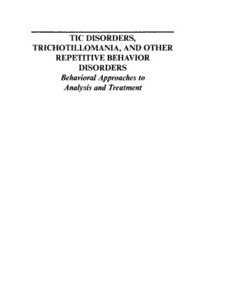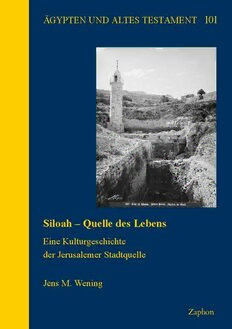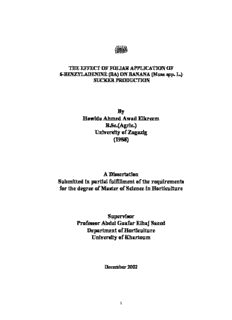
Preview Non-Abelian Analogs of Lattice Rounding
Non-Abelian Analogs of Lattice Rounding 5 1 0 2 Evgeni Begelfor n Department of Computer Science a J The Hebrew University of Jerusalem 3 1 begelfor@gmail.com ] Stephen D. Miller R ∗ G Department of Mathematics . h Rutgers University t a miller@math.rutgers.edu m [ Ramarathnam Venkatesan 1 Microsoft Research v 6 Redmond, WA and Bangalore, India 5 0 venkie@microsoft.com 3 0 . January 12, 2015 1 0 5 1 : v Abstract i X Lattice rounding in Euclidean space can be viewed as finding the r a nearest point in the orbit of an action by a discrete group, relative to the norm inherited from the ambient space. Using this point of view, we initiate the study of non-abelian analogs of lattice rounding involving matrix groups. In one direction, we give an algorithm for solving a normed word problem when the inputs are random products over a basis set, and give theoretical justification for its success. In another direction, we prove a general inapproximability result which ∗ Supported by NSF grant DMS-1201362. 1 essentially rules out strong approximation algorithms (i.e., whose ap- proximation factors depend only on dimension) analogous to LLL in the general case. Keywords: lattice rounding, matrix groups, norm concentration, Lya- punov exponents, word problems, inapproximability. 1 Introduction Given a basis a n of a lattice L Rn and a vector y Rn, the Lattice { i}i=1 ⊂ ∈ Rounding Problem (lrp) in Euclidean space asks to find argmin z y , 2 || − || z∈L thatis, avectorz Lnearesttoy. Thisproblemisveryclosely relatedtothe ∈ latticebasisreduction problemoffinding agoodbasis forL, which informally is to find another basis b n for L whose elements are as orthogonal as { i}i=1 possible. The motivation is that given such a good basis b n , lrp may { i}i=1 be easy. To wit, if L = Zn a good basis is trivial to find, and lrp can be solved by coordinate-wise rounding. For general L and bases a n , one { i}i=1 has NP-hardness results for exact and approximate versions of lrp [1,4], and their study is an active area of research. The presumed hardness of these problems also has led to constructions of cryptosystems. This typically involves three main ingredients: (a) Good Basis. Generation of a basis b n for L that is good in the { i}i=1 sense that lrp is easy relative to it on inputs randomly chosen from some distribution ν. (b) Bad Basis. Generation of a suitable matrix M SL (Z) such that n ∈ lrp with respect to ν is hard relative to the basis a n , where a = { i}i=1 i Mb . i (c) Public Key System. One keeps the goodbasis as the privatekey and the bad basis as a public key, and designs an encryption or signature scheme such that an attack on it would entail solving lrp relative to a bad basis. This paper presents a non-abelian generalization of lattice rounding, and some steps in the direction of ingredients (a) and (b). Our generalization starts with the viewpoint of Rn as an additive abelian group and L as a 2 discrete subgroup: lrp is equivalent to finding the nearest point to z (in the ambient metric) to the orbit of the origin under the action of L. This view- point can be extended to a larger class of groups, and spaces upon which they act. For example, one could consider a Lie group such as the n n × invertible matrices G = GL (R), and a discrete subgroup Γ; this direction n quickly leads to rich mathematical theory connected with dynamics and au- tomorphic forms. In this case one could choose ambient metrics on G related to a variety of matrix norms. Another direction is toconsider theactionof G onsome space X endowed with its own metric. For example, G = GL (R) acts on the vector space n X = Rn or even the projective space RPn−1 by the usual multiplication of vectors by matrices. Let Γ as before denote a subgroup of G. A non-abelian analog of lattice rounding asks to find the closest point in the Γ-orbit of a fixed vector inRn, where the closeness is measured using some natural metric on vectors (but not on matrices, although we do make a restriction on word length for practical reasons). Alternatively, if Γ and X are themselves endowed with a discrete struc- ture (e.g., Γ consists of integral matrices and X consists of integral vectors), wecaninstead study theproblemofrecognizing elements ofaΓ-orbit. To ad- dress items (a) and (b) above, is natural to ask if one can develop analogous positive algorithms for rounding with good bases and, conversely, negative results for general subgroups Γ in GL (R). One naive approach would be to n modify a generating set g ,...,g by successively replacing a generator g 1 r i { } by g gc, where j = i and c Z. In the abelian case such repeated modifica- i j 6 ∈ tions generate any change of lattice basis. However, in the non-abelian case there are some geometric constraints (such as course quasi-isometry) which may at times dull the effects of such a change. We do not investigate this direction here. In Section 3 we consider the Word Problem on Vectors (3.3), for which we propose the Norm Reduction Algorithm (3.4). The analysis of the latter leads to well-studied mathematical and algorithmic topics. For example, multiplying random elements of Γ times a fixed vector can be viewed as a generalized Markov chain (using more than one matrix); the growing vector norms of these products is itself a generalization of the law of large numbers (the case of n = 1). Additionally, the conditions for the success of our Norm Reduction Algorithm depend on an analog of the spectral or norm gap in Markov chains: it requires instead a gap between Lyapunov exponents (see (4.8)). 3 Some remarks on our generalization The generalization of lrp from lattices L in Rn to finitely-generated sub- groups Γ = S in GL (R) is neither unique nor straightforward. Here we n h i seek to make a distinction between our norms and the word-length metric, since the latter already appears in the existing literature in combinatorial group theory and the study of special groups (e.g., braid groups [8]) from algorithmic and cryptographic points of view. We informally outline a few issues that guide our formulation. Full (or at least large) dimensionality: We would like our discrete subgroups to not be contained inside some subgroup of much smaller dimen- sion of the ambient group. In Rn one typically assumes the lattice L has full rank, or least has relatively large rank. Its natural matrix analogue is to re- quire the Zariski closure of Γ = S be the full group (or at least correspond h i toasubgrouphaving asignificant fractionofthedimension ofthefull group). By definition, this means that the full group is the only group containing S which can be defined as the common zeroes of a set of polynomial equations. This ensures Γ = S is non-abelian in as general way as possible. h i For example, if S has only diagonal matrices it cannot generate any non- abeliangroup, anditsZariski closureisatmost ann-dimensional subgroupof the n2-dimensional group GL (R). In fact, by considering commuting diago- n nal matrices one can embed subset-sum type problems and get NP-hardness results. Note that matrices composed of 2 2 blocks along the diagonal can × generate non-abelian groups that essentially describe simultaneous problems in dimension 2; nevertheless, the Post Correspondence Problem can be em- bedded as a word problem over 4 4 matrices with 2 2 blocks, proving × × the undecidability of the latter [16]. However, certain problems can actually become easier in the non-abelian setting: for example, finding the order of a random element in S is much easier than in (Z/pZ)∗. n Metrics: The distinction between the word length metric and ambient matrix norm is discussed in some detail in Section 2 below. The former depends on the generating set S. In general these can be very different notions of distance, which makes our study difficult – yet is key to potential cryptographic applications. We use the Furstenberg-Kesten theory [6,7,13] of random matrix products to correlate the two (in a probabilistic sense) in certain situations, which is analogous to the “good basis” situation described in (a) above. Finite co-volume and compactness If L has full rank, then L Rn \ 4 is a compact, finite-volume quotient. However, neither property necessarily extends to the quotients Γ G in many important examples of Γ and G. Thus \ we do not impose this requirement. Some further comments are given just below in the beginning of the following section. Outline of this paper Section 2 contains some background about different metrics on Lie groups and their discrete subgroups. Section 3 introduces the statements of the word problems that motivate our results, as well as the Norm Reduction Algorithm (3.4), which is rigorously analyzed in Theorem 4.1. The Closest Group Element Problem is also given in section 3, along with the statement ofitsinapproximability resultTheorem3.1. TheanalysisoftheNormReduc- tion Algorithm is performed in Section 4 using results in dynamical systems. Some experimental results on the algorithm are also presented in Section 4.5. The proof of Theorem 3.1 is given in Section 5; it demonstrates a polynomial time reduction from the Traveling Salesman Problem. WewouldliketothankAnthonyBloch, HillelFurstenberg, NathanKeller, Peter Sarnak, Adi Shamir, Boaz Tsaban, and Akshay Venkatesh for their helpful comments. 2 Background Just as a lattice L = a ,...,a is additively generated by its basis a , 1 n i h i { } the subgroups Γ = g ,...,g we consider will be finitely generated. A 1 k h i crucial difference, however, is that the quotient of Rn by L is a compact n-dimensional torus with finite volume under the usual Lebesgue measure on Rn (for example, the quotient Zn Rn). However, this fails to be true \ for nice examples such as GL (Z) GL (R) or even SL (Z) SL (R), both n n n n \ \ of which are noncompact under the natural group invariant metric inherited from G (the latter quotient, however, does have finite volume). The theory and construction of both compact and noncompact discrete subgroups of Lie groups involves numerous beautiful subtleties (see [15,24]); we do not restrict ourselves to these objects in this paper. There are two natural notions of size in Γ, andby extension to the Γ-orbit of any basepoint x X: ∈ 5 1. Word length metric: If S = g ,...,g is a generating set of Γ as 1 k { } above, any element w Γ can be expressed as a finite word in the ∈ alphabet S S−1. There may be many possibilities for such a word, ∪ taking into account relations amongst the g (including the trivial rela- i tion g g−1 = 1). The minimal such length among all such expressions i i is the word length of w with respect to S. The ability to efficiently compute the word length of w enables one to efficiently write it as a minimal length word, simply by successively checking which of the expressions g±1w reduces the word length by i one. Finding the word length depends of course on the generating set S, which is analogous to the basis of a lattice. In analogy with ingredients (a), (b), and (c) above for Euclidean lattices, we want the word length to be difficult for typical generating sets S of Γ, yet at the same time easy for some “good bases” S; moreover, we would like to be able to transform each “good base” into a seemingly bad one. 2. Inherited metric: Fundamental to lattice reduction and rounding is the notion of metric on the ambient space. Natural metrics on G and X therefore can be used to give generalizations of lattice rounding. Com- bining this with word length results in problems such as the following: given ℓ N, Γ GL (R), and vectors y and z Rn, find γ Γ such n ∈ ⊂ ∈ ∈ that gy z is minimized over all γ Γ with word length at most 2 || − || ∈ ℓ. Thus the length parameter ℓ is used to complement (rather than to duplicate) the ambient metric. Though we do not present any cryptographic systems here, generaliza- tions of attacks on existing cryptosystems motivate studying rounding prob- lems in more general settings than lattices in Rn alone. With some per- formance enhancing additions, the lattice reduction algorithm LLL [12] has long become a valuable tool in cryptanalysis [11], and typically is more ef- fective than the provable guarantees attached to it indicate alone. Starting with the original attack of Shamir [21], some very effective attacks have been discovered. The attacks are often based on the Shortest Vector Problem in lattices: given a basis for L, find a nonzero vector in L with minimal norm. In polynomial time, the LLL algorithm finds a vector within a factor of 2n/4 of being the shortest, a strong bound – i.e., one which depends only on the dimension of the lattice, and not on the sizes of the entries in the lattice basis themselves. Babai’s rounding algorithm [2] – which is based on LLL 6 – also has this feature for solving lattice rounding problems in Euclidean space. The fact that this bound depends only on the dimension is crucial for attacks. In contrast, we prove in Theorem 3.1 that the analogous question of rounding products of matrices cannot have a polynomial time strong approx- imation algorithm1 – unless P=NP. This is done by creating a polynomial time reduction to the Traveling Salesman Problem, which has a similar in- approximability result. Thus a strong approximation algorithm like LLL for rounding in matrix groups is unlikely to exist. 3 Some non-abelian problems and an algo- rithm We study problems that arise out of group actions on normed spaces, where we are concerned with the action of group elements that have short expres- sions relative to a given basis or generating set. We now proceed to formally define these problems and state some known results. We shall work with GL (R), the group of all invertible d d real matrices, d × and often with subsets that have integer entries. Given g ,...,g GL (R), 1 k d ∈ we consider the possible products of these matrices up to a certain length bound, andwhetherornottheycanberecognizedassuch. Thewordproblem is the algorithmic task of representing a given matrix in this semigroup as a product of the generators: Word Problem Input: Matrices g ,...,g and x GL (R). 1 k ∈ d (3.1) Output: An integer ℓ > 0 and indices 1 s ,...,s k such 1 ℓ ≤ ≤ that g g g = x, if such a solution exists. s1 s2··· sℓ This word problem is known to be unsolvable when d 4 [17]; however, ≥ there is an algorithm for specifically constructed generators when d = 2 [9] (the case of d = 3 is open). It becomes NP-hard for d 4 if we bound the ≥ 1 where the approximating factor is a polynomial time computable function of the di- mension. 7 word length ℓ, as we do for all our problems in the rest of the paper: Bounded Word Problem Input: An integer L > 0, and matrices g ,...,g and x 1 k ∈ GL (R). (3.2) d Output: Indices 1 s ,...,s k such that g g g = ≤ 1 L ≤ s1 s2··· sL x, if such a solution exist. This problem can be modified to allow for words of length L. ≤ We now define another related problem, in which the matrices act on vectors: Word Problem on Vectors. Input: An integer L > 0, matrices g ...,g GL (R) with 1 k d ∈ integer entries, and nonzero vectors v,w Zd. (3.3) ∈ Output: An integer ℓ L and indices 1 s ,...,s k 1 ℓ ≤ ≤ ≤ such that g g g v = w, if such a solution exists. s1 s2··· sℓ Typically we are interested in instances where ℓ = L and the indices s are j chosen independently and uniformly at random from the above interval. Us- ing the ambient norm on Euclidean space, we present the following algorithm for this problem: Norm Reduction Algorithm: Let j = 0, and t be a fixed parameter. repeat j = j +1 s = argmin g−1w (3.4) j k i k i w = g−1w sj until w = v or j = L t. − Solve for s ,...,s by exhaustive search. L−t+1 L We include the option of exhaustive search for the final t steps in case the algorithm performs worse on smaller words than on larger ones. Another possibility istouse a memory-length look-aheadalgorithmsuch asin[19, 7]. § The Norm Reduction Algorithm is rigorously analyzed in the next section, where it is related to a maximal likelihood algorithm. Its success depends 8 on some mild yet complicated conditions on generators g ,...,g that come 1 k fromdynamics. Theorem4.1inthenext sectiongivesarigorousupperbound on the error probability of this algorithm. We give a successful numerical example in Table 1 in Section 4.5, along with how Theorem 4.1’s constants pertain to it. One can also define a related rounding problem, whose analysis and al- gorithms are quite similar. Instead, we will focus on the following matrix rounding question: finding a short word in a semigroup closest to a given one (with an length constraint imposed for practical reasons). Closest Group Element Problem (cgep) Input: A positive integer L > 0, and matrices g ,...,g and 1 k (3.5) z GL (R). d ∈ Output: The closest word of length L in the g to z. i ≤ Though the problem can be stated for various notions of distance, we will use the sum-of-squares matrix distance 2 (a ) (b ) = a b 2 (3.6) ij ij ij ij − | − | (cid:13) (cid:13) Xi,j (cid:13) (cid:13) (cid:13) (cid:13) in studying this problem. Our main result about the cgep problem is the following negative result, which comes close to ruling out the existence of an algorithm such as LLL that approximates the closest element up to a constant factor depending only on the dimension. In the following we denote by CGEP(g ,...,g ,z,L) the 1 k solution to the cgep problem as above. Theorem 3.1. Let f : Z [1, ) be a polynomial time computable func- >0 → ∞ tion. If there exists a polynomial time algorithm A which, given the input of a cgep problem as in (3.5), always outputs a word w′ of length L in the ≤ g such that i w′ z f(d) CGEP(g ,...,g ,z,L) z , (3.7) 1 k k − k ≤ k − k then P = NP. It is an interesting open problem whether or not the approximation factor can instead depend on the sizes of the entries. 9 4 Maximum Likelihood Algorithms In this section we give and analyze a simple algorithm to solve the Word Problem on Vectors (3.3): try to reduce the norm at each step, or put dif- ferently, attempt to use the norm as a proxy for word length. This involves studying some background fromdynamics related to randomproducts of ma- trices, first studied by Furstenberg andKesten [6,7]. Our results are sensitive to certain conditions related to the generators, which we describe before stat- ing our result. These are discussed thoroughly in the book [13], which serves as a general reference for background material on the topic of this section. In addition, several of the techniques and arguments in this section are taken from [13]. Let S = g ,...,g denote a finite subset of G = GL (R), and T = 1 k d { } S the semigroup it generates. Throughout this section we will use g to h i k k denote the operator norm of a matrix g. We make the following standing assumptions on the set S throughout this section: A1. T is contracting in the sense of [3, Definition III.1.3]. This means that T hasa sequence of matrices M ,M ,... such that M / M converges 1 2 n n k k toarank1matrix. Itisreadily seen(using Jordancanonical form)that this condition holds automatically if S (or even T) contains a matrix with an eigenvalue strictly larger than its others in modulus. A2. T is strongly irreducible: there is no finite union of proper vector sub- spaces of Rd which is stabilized by each element of T. Equivalently, the same statement holds with T replaced by the group generated by S ([3, p. 48]). A3. The operator norms g−1g , j = i, are all at least some constant k j ik 6 N > 1. We prove the following result about the probability of success of the Norm Reduction Algorithm (3.4). This gives a strong indication (along with numerical testing) that norm reduction is a suitable algorithm for solving the Word Problem on Vectors (3.3). It is also often possible to show that the group generated by S is free by deriving a quantitative version of the well- known Ping-Pong Lemma. We do not address these issues in this version of the paper. 10
The list of books you might like

Can’t Hurt Me: Master Your Mind and Defy the Odds

The Strength In Our Scars

Shatter Me Complete Collection (Shatter Me; Destroy Me; Unravel Me; Fracture Me; Ignite Me)

Credence

Baú de ossos

Theory, Analysis and Design of RF Interferometric Sensors

Business Web Strategy Design, Alignment, and Application

Tic Disorders, Trichotillomania, Other Repet. Behav. Disorders

as vivências travestis e transexuais no espaço dos terreiros de cultos afro

NASA Technical Reports Server (NTRS) 20080013557: Aerodynamic Characteristics of Two Rotary Wing UAV Designs

Siloah ― Quelle des Lebens: Eine Kulturgeschichte der Jerusalemer Stadtquelle

NASA Technical Reports Server (NTRS) 20060002706: A Simple, Powerful Method for Optimal Guidance of Spacecraft Formations

CUFORG Vol 2 No 46 1993 12

Deputi Bidang Pelayanan Publik Bandung, Maret 2017

By Howida Ahmed Awad Elkreem B.Sc.(Agric.)

Systematics of Global Observables in Cu+Cu and Au+Au Collisions at RHIC Energies

Kirkus Reviews 1993: Vol 62 Index

Symmetry Energy in the Equation of State of Asymmetric Nuclear Matte

Technology, information and the decentralization of the firm

Energies of Quantum QED Flux Tubes

The Thames by Mortimer Menpes



